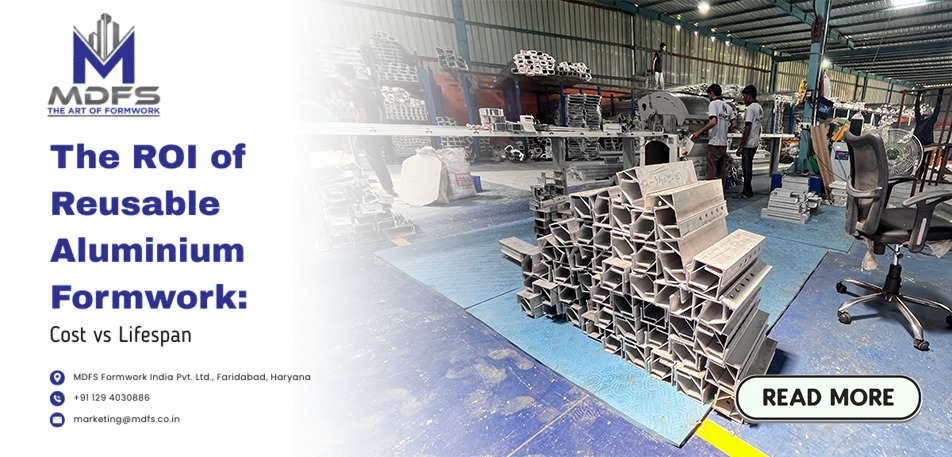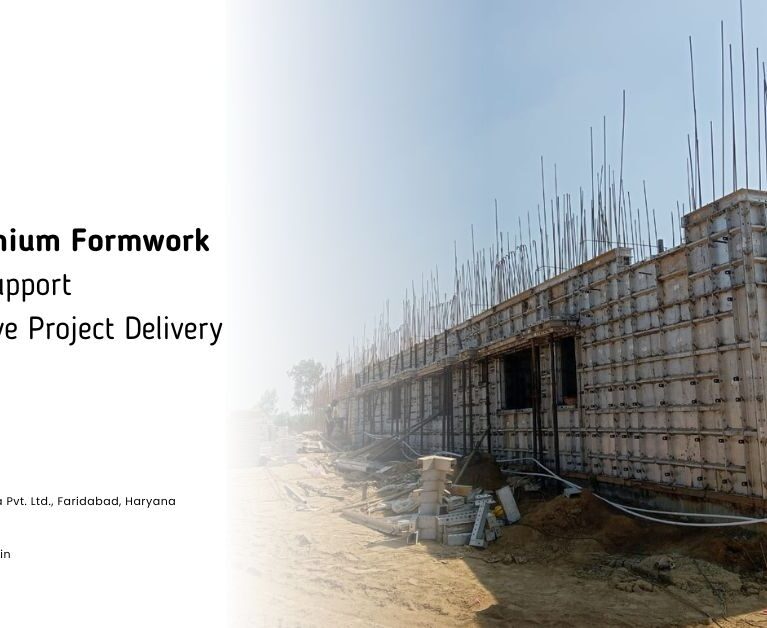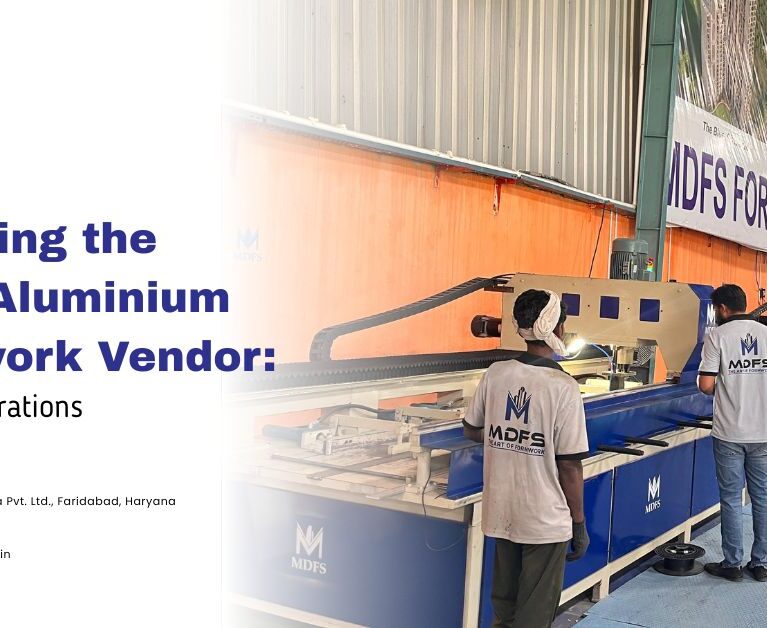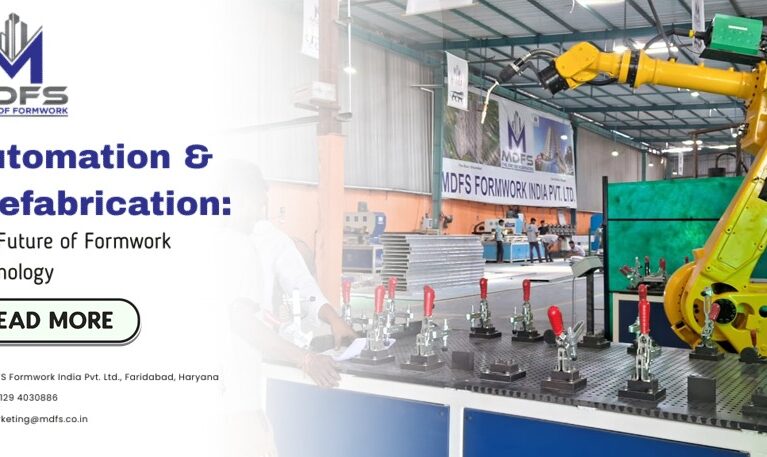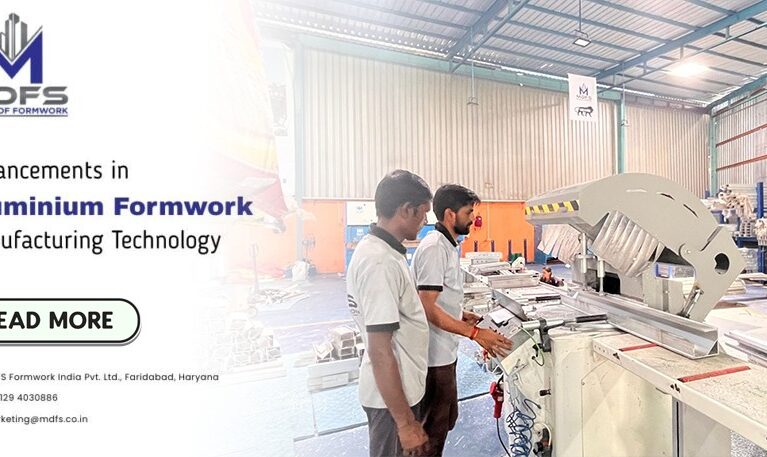In the fast-paced world of construction, where timelines are tight and cost efficiency is crucial, choosing the right formwork system can significantly impact project success. One solution gaining popularity across residential and commercial sectors is reusable aluminium formwork. While the initial investment in aluminium systems is higher than traditional formwork, their long-term return on investment (ROI) is far more favorable. This blog explores the true ROI of reusable aluminium formwork, focusing on the cost vs lifespan dynamic and the role of experienced aluminium formwork providers in optimizing your construction value.
What is Aluminium Formwork?
Aluminium formwork is a lightweight, high-strength system used for casting concrete in repetitive construction layouts such as high-rise buildings, mass housing, and infrastructure projects. It allows for precise, smooth, and monolithic concrete finishes without the need for external plastering, making it highly efficient and cost-effective in the long run.
The system is composed of panels and components such as wall panels, slab panels, beams, decks, and props—engineered for quick assembly and disassembly. The reusable nature of aluminium formwork significantly reduces the need for replacement and labor costs over multiple projects.
Initial Cost: A Higher Upfront Investment
The main hesitation for many builders lies in the initial cost. Aluminium formwork typically costs more upfront than conventional materials like timber or steel. On average:
- Timber formwork costs less but deteriorates quickly (5–10 reuses).
- Steel formwork lasts longer (30–50 reuses) but is heavier and harder to handle.
- Aluminium formwork can be reused over 200–300 times if maintained properly.
This high initial expense is where trusted aluminium formwork providers come in. A good provider not only supplies durable systems but also offers guidance on configuration, on-site training, and post-installation support, ensuring you extract the maximum utility from your investment.
Lifespan: Long-Term Reusability
The key selling point of aluminium formwork is its extended lifespan. Compared to traditional options, aluminium formwork systems are highly durable, corrosion-resistant, and ideal for repetitive casting.
Here’s how the reusability benefits stack up:
|
Formwork Type |
Avg. Lifespan (uses) |
Maintenance Cost |
Finish Quality |
|
Timber |
5–10 uses |
High |
Medium |
|
Steel |
30–50 uses |
Moderate |
High |
|
Aluminium |
200–300 uses |
Low |
Excellent |
The cost per use of aluminium formwork drops drastically after 30–40 cycles, which means that from the second or third project onward, the ROI significantly outpaces conventional methods.
Time is Money: Faster Construction Cycles
Aluminium formwork systems are known for enabling fast construction cycles. Their modular design allows for easy handling, quick installation, and dismantling, resulting in:
- Faster floor-to-floor cycle times (as low as 7 days per slab)
- Reduced labor dependency
- Fewer delays due to material unavailability or poor craftsmanship
Faster completion translates into lower holding costs, quicker monetization, and higher project turnover—all critical metrics for ROI. Aluminium formwork providers who offer system design tailored to your project layout can further optimize these time-saving advantages.
Quality Output and Reduced Post-Processing
Another major contributor to ROI is the superior finish that aluminium formwork provides. The precision-fit panels result in:
- Smooth, uniform concrete surfaces
- Elimination of plastering in many cases
- Enhanced structural integrity due to monolithic casting
The reduced need for finishing saves both materials and labor. Over a large-scale housing or commercial development, these savings compound into significant cost reductions.
Sustainability and Environmental ROI
In today’s construction ecosystem, sustainability is becoming a core factor in decision-making. Aluminium formwork is:
- 100% recyclable
- Responsible for less construction waste
- Ideal for green building certifications (LEED, IGBC, etc.)
The long lifespan also means fewer materials are consumed over time, contributing to a lower carbon footprint per project. This non-tangible ROI adds brand value and compliance benefits, particularly for government or eco-sensitive projects.
Partnering with the Right Aluminium Formwork Providers
Choosing the right aluminium formwork providers can be the difference between average and exceptional ROI. Reputable providers offer:
- Project-specific custom design for maximum reuse
- On-site training and supervision
- Repair and refurbishment services
- Inventory management solutions for large-scale developers
This partnership ensures that the system’s full lifespan is utilized, reducing wastage and operational inefficiencies. Many providers also offer leasing or buyback programs, further increasing financial flexibility.
ROI in Numbers: A Simple Illustration
Let’s take a hypothetical example:
- Initial cost of aluminium formwork: $100,000
- Usable for 200 cycles
- Cost per use: $500
- Compared to timber (at $10,000 for 10 uses): $1,000 per use
Even though timber has a low upfront cost, aluminium provides a 50% lower cost per use after just two reuse cycles. Factor in faster completion, reduced finishing, and less labor, and the total cost advantage is even more pronounced.
Final Thoughts
While the upfront investment in aluminium formwork may appear steep, its lifespan, speed, quality, and reusability make it one of the most cost-effective solutions in the long run. The ROI is not just about money—it’s about time saved, quality delivered, and sustainability achieved.
By working with expert aluminium formwork providers, developers and contractors can unlock the full potential of this advanced technology, achieving better outcomes across every metric that matters.
Ready to make a long-term investment in smarter construction? Partner with a trusted aluminium formwork provider today.


